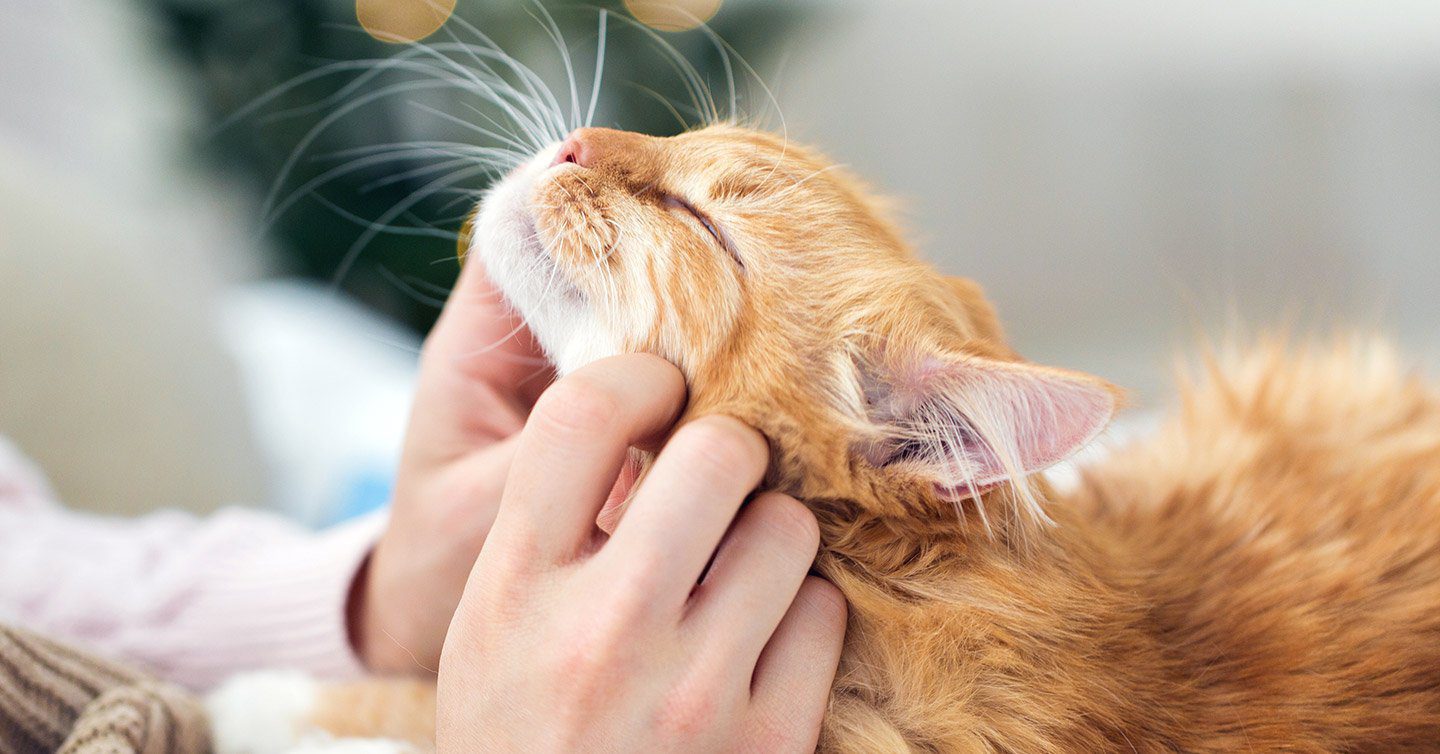If you have a furry four-legged feline, you may tend to associate their cat purr with happiness and comfort. These are definitely two reasons for your cat’s internal thunder, but there are several reasons why cats purr.
Before we address the why’s of a cat purring, let’s talk about the how’s. Exactly how do cats purr?
How do cats purr?
The purr originates as a signal from the cat’s brain and then goes to the laryngeal muscles (voice box). These muscles tighten and loosen quickly as the cat inhales and exhales, and that’s what makes those “good vibrations” or purrs.
Why do cats purr?
While there may be different cat purring variations, all research indicates that it is one of the feline’s chief communication tools they have with their cat owners. Some of the things that they’re communicating when purring include:
- Happiness
If your cat is just chilling in the sun, on their back, with their eyes half open and purring, that’s a good sign your cat is gleefully secured in their peaceful space. - Hunger
Some house cats purr right around mealtime. This purring sounds a bit like a mixture of their usual purr with an unpleasant cry or meow. This is sometimes called a “solicitation purr.” Or in short-hand, “FEED ME!” If you’re a cat parent, you won’t be surprised to learn that Nicholas Dodman of Tufts Cummings School of Veterinary Medicine argues that cats may use this “solicitation purr” as a manipulation tool to get what they want. My personal research indicates that it’s a successful tool. - Bonding
Kittens can purr almost immediately, and because they are blind and deaf when they’re born, it’s mother cats purring that kittens feel to find food and warmth. Because cats can’t sing “Rock A Bye Baby,” their purr is also used as a lullaby by mother cats to sing (or rumble) to their young ‘uns. - Exercise
Cats are masters of their energy conservation. While saving energy for long periods of time (cat naps), purring is actually a way for the body to stimulate and build muscle. - Relief and Healing
Your cat’s purring could also just be a security blanket and provide some comfort if they’re feeling stressed after an injury, or even a car ride. Some research has suggested that these vibrations may also ease breathing, lessen swelling, and even heal bones. The feline purr has a frequency that is anywhere between 25 and 150 hertz. It’s been suggested by numerous investigators that sound frequencies in this range can improve bone density and help repair tendons.
In one ongoing study in Sweden, scientists study the communicative relationship between humans and cats, and how cats respond. Researcher Susanne Schötz says: “We know that cats vary the melody of their sounds extensively, but we do not know how to interpret this variation. We will record vocalizations of about 30-50 cats in different situations – e.g., when they want access to desired locations when they are content, friendly, happy, hungry, annoyed, or even angry – and try to identify any differences in their phonetic patterns.”
Historically speaking, the cat purr is associated with pleasure. But it should be noted that cats can also purr when injured or frightened. Because the purr is at such a low frequency, it is meant only for the feline’s closest family members.
It may be best to evaluate your feline friend’s purr within the context you are hearing/feeling it. Think of the cat purr like human laughter. Generally speaking, we associate laughter with positive things like humor or joy, but it’s not uncommon for people to laugh during “discomfort or derision.” It’s only the onlooker who has the context to determine what the reaction is in response to.
Do all cats purr?
Cats in the wild are no different than cats in the mild. Early studies of the family Felidae (fancy word for cats) concluded that cats could either purr or roar and split the family into two – Felinae (non-roarers/purrers) and Pantherinae (roarers). Cat studies have evolved to the point where it’s believed that most cats (wild or domesticated) purr with a few exceptions.
Pantherinaes (roarers)
Big cats like lions, leopards, jaguars, tigers, etc. do not purr.
Why? In these “roarers,” the Epihyoideum (the ligament lying between the pharyngeal muscle and the Musculus thyroglossus) is less firm. That is all science talk for saying that there is some tissue in the throats of “roarers” that is softer than it is in “non-roarers.” This is what allows them to roar.
The evolutionary characteristic of roaring cats, like lions or tigers, is that they use their roar to protect their pride and territory.
Felinae (non-roarers/purrers)
With the “non-roarers” like cheetahs or domestic house cats, that ligament (the Epihyoideum) is firmer and bonier like. It’s this harder attribute of the Epihyoideum that gives cats the ability to purr.
The evolutionary behavior of non-roarers or purring cats allowed that ligament to harden. These cats are more likely to be loners that don’t have to compete for prey. In replacement of the roar, these cats will use their scent to mark their territory.
Are there any domestic cats that don’t purr?
Some domestic cats purr almost silently, and some purr at a volume that approaches that of a baby crying. Others, such as some feral cats, may not purr at all.
The Feral Feline
Even though they are able to purr, scientists have discovered that it’s not uncommon for feral cats not to purr.
One theory as to why feral cats are more likely to be non-purrers than domestic cats is that wild cat mothers discourage purring in their kittens to prevent them from attracting predators. Studies have also shown that domesticated cats have more developed vocal cords because they use purring to communicate with their humans.
As most cat lovers know, feral cats aren’t always interested in talking to humans.
What impact does cat purring have on us humans?
One reason why domesticated, or house cats, use purring is to calm themselves. As luck would have it, it turns out that the purr also has benefits to humans.
And not just feel-good benefits – actual health benefits. Cat parents everywhere can rejoice because a long-term study by the University of Minnesota Stroke Centre found that people who owned cats were less likely to die from cardiovascular disease than non-cat owners!
So the next time your furry friend knocks something off the table, don’t be so quick to yell at them – they may just be saving your life in the long run!
At the end of the day, our domesticated feline friends use a variety of ways to show their love for us. They may use body language as a form of communication, from head butting to pointing their tails upward. Or, while you’re giving your kitty some quality pets, listen closely underneath their rumbling purr. They might just be saying “I love you.”




